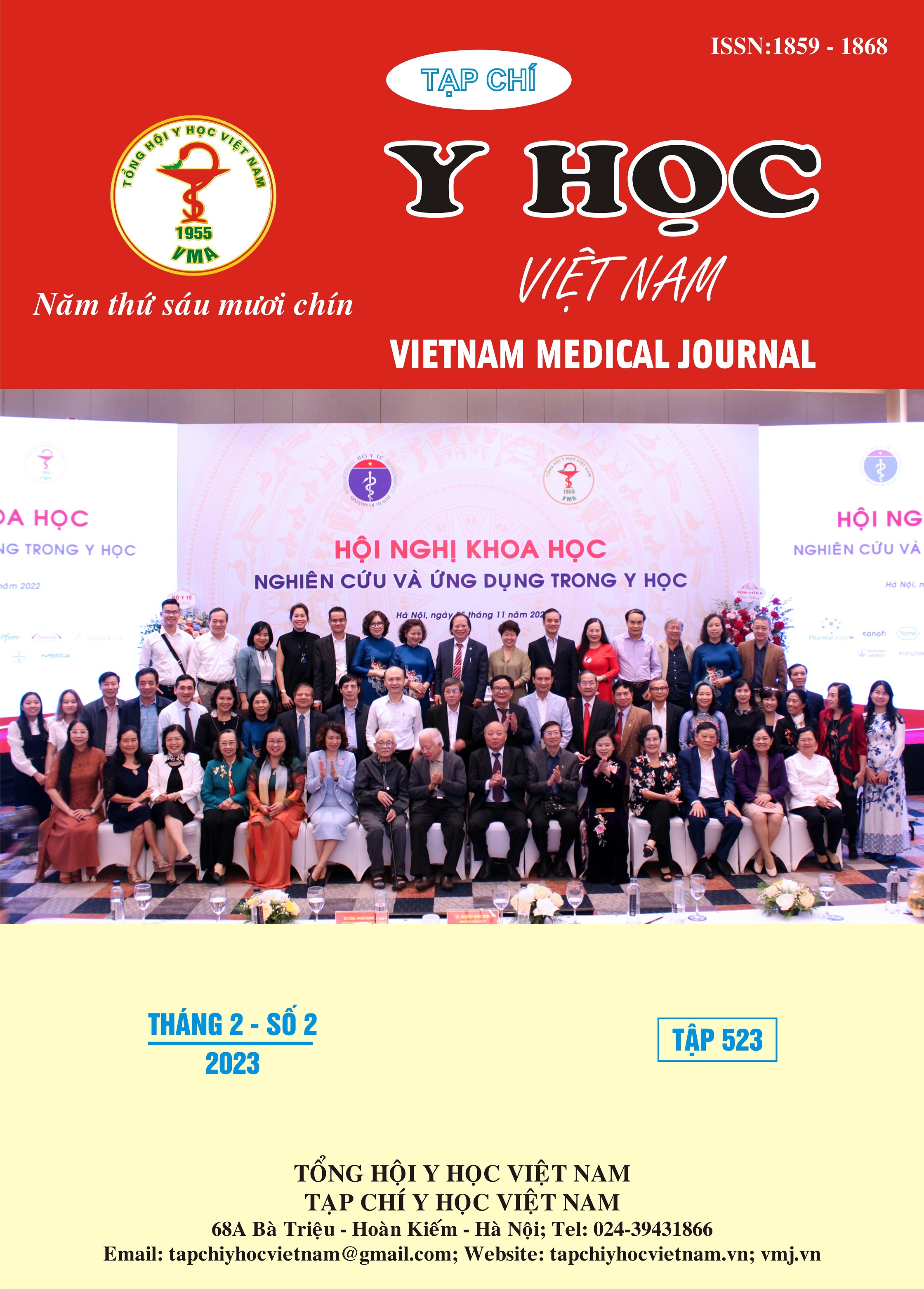INVESTIGATION ON DRUG TREATMENT OF DYSLIPIDEMIA IN HOSPITALIZED PATIENTS WITH ACUTE CORONARY SYNDROMES AT BA RIA HOSPITAL
Main Article Content
Abstract
Objectives: This study was designed to investigate medications to treat dyslipidemia in patients hospitalizated due to acute coronary syndromes at Cardiology and Geriatric Department of Ba Ria hospital. Methods: A retrospective, cross-sectional study was carried on medical records of inpatients at the Cardiology and Geriatric Department who had been diagnosed with acute coronary syndrome from August 1st 2020 to July 31st 2021. Patterns of drug use at hospital admission and discharge were analyzed. The relationship between risk factors and length of hospital stay or outcome were determined. Results: Patients who were prescribed high-intensity statins at admission and at discharge were 62.5% and 64.5%, respectively. Majority of UA and NSTEMI were prescribed atorvastatin, while STEMI was prescribed rosuvastatin on admission, and at discharge, majority of all three types were prescibed atorvastatin. Patients with a history of statin use are able to decrease length of hospital stay, while low glomerular filtration rate and myocardial infarction with/without ST elevation are able to increase length of hospital stay. The use of statins on admission resulted in a 8-fold reduction in the rate of outcomes in patients (death, stroke, referral to hospital, new myocardial infarction, heart failure). Conclusion: Consideration should be given to prescribing high-intensity statins for patients with a diagnosis of acute coronary syndrome, lasting after discharge from the hospital. More high-level study designs such as prospective cohort studies are needed to clearly identify affecting factors to length of hospital stay and outcomes.
Article Details
Keywords
Statin, rate of drug use, affecting factor, acute coronary syndrome
References
2. Mozaffarian D., Benjamin E.J., Go A.S. et al. (2015). “Heart disease and stroke statistics--2015 update: a report from the American Heart Association”, Circulation, 131(4), pp. e29-322.
3. Mach F., Baigent C., Catapano A.L. et al. (2019). “2019 ESC/EAS Guidelines for the management of dyslipidaemias: lipid modification to reduce cardiovascular risk”, Eur Heart J, 41(1), pp. 111-188.
4. Baigent C., Keech A., Kearney P.M. et al. (2005). “Efficacy and safety of cholesterol-lowering treatment: prospective meta-analysis of data from 90,056 participants in 14 randomised trials of statins”, Lancet, 366(9493), pp. 1267-78.
5. Ho P.M., Spertus J.A., Masoudi F.A. et al. (2006). “Impact of medication therapy discontinuation on mortality after myocardial infarction”, Arch Intern Med, 166(17), pp. 1842-47.
6. Grundy S.M., Stone N.J., Bailey A.L. et al. (2018). “2018 AHA/ACC/AACVPR/AAPA/ABC/
ACPM/ADA/AGS/APhA/ASPC/NLA/PCNA Guideline on the Management of Blood Cholesterol: A Report of the American College of Cardiology/American Heart Association Task Force on Clinical Practice Guidelines”, J Am Coll Cardiol, 73(24), pp. e285-e350.
7. Phạm Nguyễn Vinh, Nguyễn Lân Việt, Trương Quang Bình và cs. (2011). “Nghiên cứu quan sát điều trị bệnh nhân nhập viện do hội chứng động mạch vành cấp (MEDI – ACS study)”, Tạp chí Tim mạch học Việt Nam, (58), tr. 12-24.
8. Châu Ngọc Hoa, Nguyễn Vĩnh Trinh (2017). “Khảo sát tình hình điều trị rối loạn lipid máu ở bệnh nhân hội chứng mạch vành cấp”, Tạp chí Y học TP Hồ Chí Minh, phụ bản tập 21(1), tr. 173-178.


